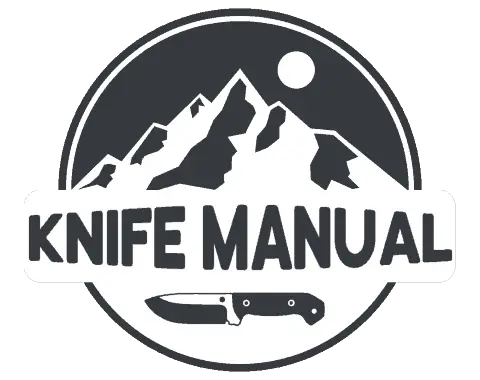You can use a reliable hunting knife for a wide variety of tasks, and most likely, it will become quite dirty after a while. Being able to clean and maintain your hunting knife properly is essential for it to last and continue working at its best.
To clean a hunting knife, run it under warm water and lightly scrub it with soap. This rinse will get most of the grime off your knife, but you may need to add baking soda to the rinse if your blade is extremely dirty. Once your blade is clean, thoroughly dry your hunting knife so it won’t rust.
If you haven’t cleaned your hunting knife in a little while, or ever before, it can seem like a daunting task. However, maintaining and cleaning your hunting knife is quite simple and can be done in only a few minutes.
So let’s just jump right into it and talk about how to clean your hunting knife, some maintenance tips and tricks, and so much more!
Table of Contents
How to Clean a Hunting Knife the Right Way
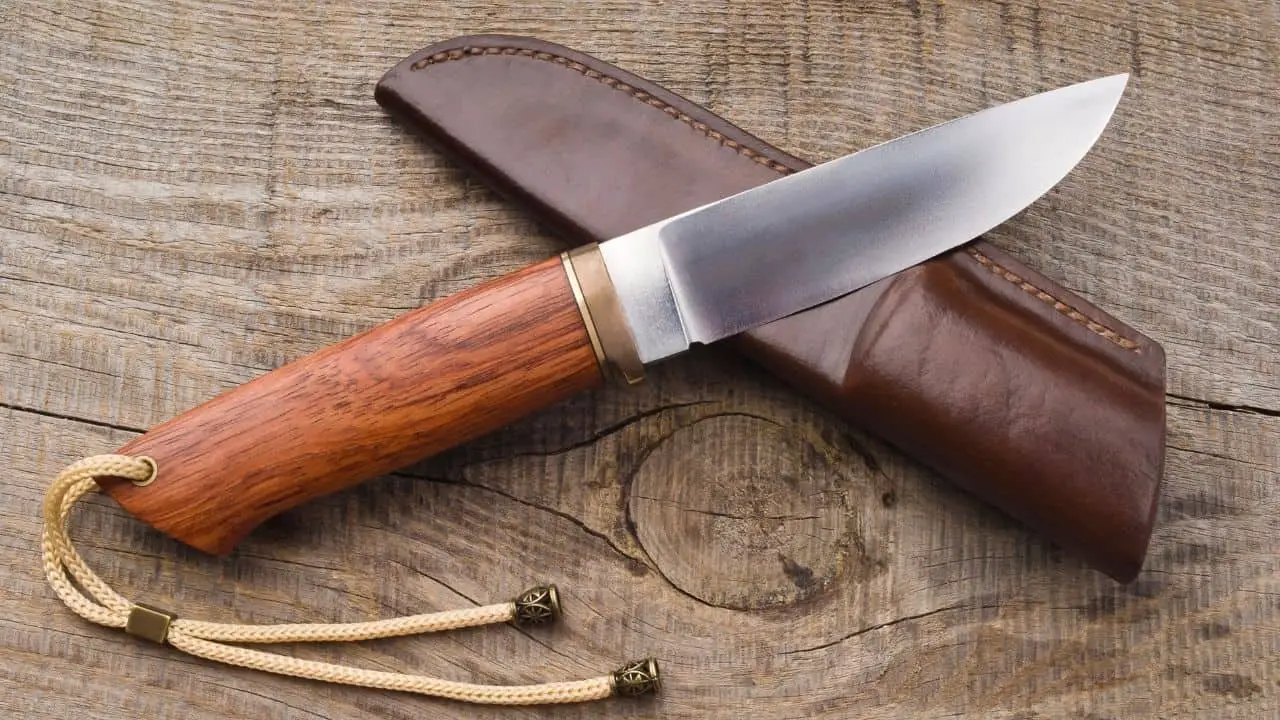
There are many ways to clean your hunting knife blade, but it is essential to be careful with what you apply to your blade. Most methods out there are just fine (well, some work better than others), but there are a few that are downright dangerous and could end up causing severe harm to your blade.
As a general rule, you want to keep it as natural as possible when cleaning your hunting knife.
You often use your hunting knife for processing meat, which means you want to pay special attention to what your blade comes into contact with while you’re cleaning and using it. Pay a bit of extra attention to what you use your hunting knife to do and how you tend it, and you should be fine.
for processing meat, which means you want to pay special attention to what your blade comes into contact with while you’re cleaning and using it. Pay a bit of extra attention to what you use your hunting knife to do and how you tend it, and you should be fine.
Below are the best ways to clean your hunting knife if it is mildly dirty, extremely dirty, as well as how to clean your knife’s handle.
Feel free to take elements from different processes and combine them to ensure your knife is as clean as possible. Just make sure to keep it as natural as possible, and don’t let anything strange come into contact with your blade.
Cleaning Your Hunting Knife When It is Mildly Dirty
What counts as “mildly dirty” is up to a bit of interpretation, but I think of it as only a little bit of grime, dirt, or stuff on your blade that should be pretty simple to clean off.
Cleaning a mildly dirty hunting knife is basically rinsing it in the sink and then drying it SUPER well. I cannot stress enough how important it is to dry your knife after cleaning it. The extra five minutes you spend drying off your knife could save your blade from becoming super rusted and you having to get a new knife.
If this method does not get all of the grime, dirt, or other substances off your knife, your best bet is to repeat the process or follow the instructions in the next section on cleaning an extremely dirty hunting knife.
Materials You Will Need:
- Warm water
- Scrubbing pad or sponge
- Dry cloth
Step 1:
The first thing you’re going to want to do to clean your hunting knife is to briefly rinse it off in the warm water to get off any surface dirt, grime, or anything else on your knife. Run your blade under the faucet if you can, or carefully use your fingers.
Step 2:
Once all of the large particles on the surface of your blade are gone, carefully take your sponge or scrubbing pad and lightly begin to wipe off the blade of your knife. This step should remove any remaining dirt or filth.
Step 3:
After you have removed all of the grime off your mildly dirty hunting knife, it’s time to dry it thoroughly. When I say dry it, I mean dry it VERY well. Any remaining moisture on your knife could end up ruining the material or cause rust, so you must ensure your blade is extremely dry.
Step 4:
Now that your hunting knife is clean, it is always a good idea to add a layer of oil to your blade to ensure it stays protected and healthy. I prefer to use vegetable oil, but nearly any non-petroleum-based oil will work. Rub a light layer of oil down both sides of your blade and remove any access with your cloth.
Cleaning Your Hunting Knife When It is Extremely Dirty
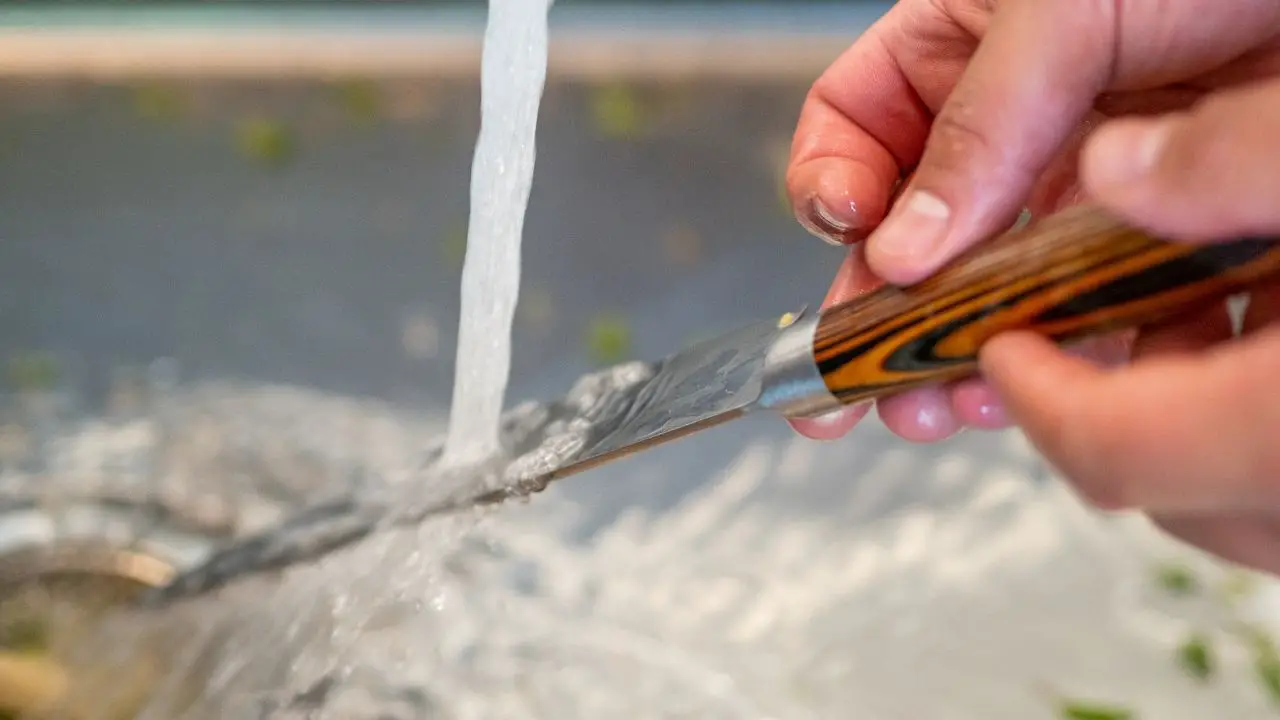
Extremely dirty hunting knives are a little more challenging to clean, but you can get it done with a little bit of patience and time. Below is how I would go about cleaning a hunting knife that is really dirty or caked with other substances.
This process will get most dirt or filth off of a hunting knife, but you may need to spend quite a bit of time scrubbing and working at it. If whatever substance you have on your blade simply isn’t coming off, you can begin to use more abrasive materials such as steel wool. I highly advise against it because it can seriously harm your blade if not done carefully.
Only use anything more abrasive than a sponge or scrubbing cloth if you have to, and be aware of the risks.
Materials You Will Need:
- Warm water
- Sponge or scrubbing pad
- Baking soda
- Dry cloth
Step 1:
Begin by removing the large particles and bits of dirt and grime from your knife by rinsing it in warm water. You may need to use your fingers to push off some of the dirt if the water pressure is not sufficient.
Step 2:
The finer pieces of grime and what can’t come off from a simple rinse are what you need to tackle next. You can do this by using your sponge or scrubbing pad to clean your knife’s blade carefully.
Step 3:
Once you have cleaned the majority of the grime, dirt, and other substances off your knife, it’s time to do the deep cleaning part. Begin by mixing equal parts water and baking soda into a small bowl or container (use about a tablespoon of each to begin). Coat both sides of your hunting knife’s blade with the resulting baking soda and water paste.
Step 4:
Use your sponge or scrubbing pad to rub the baking soda and water paste on your blade to finish cleaning off any remaining filth. It may take a little bit of time, and you may need to reapply more paste to your blade, but it should be pretty effective at removing grime from your knife.
Step 5:
Once your knife is sparkling clean and finished, use your dry cloth to dry your hunting knife thoroughly. Like in the previous instructions, it is SUPER important to make sure your knife is entirely dry to prevent rust from forming on your knife.
It doesn’t do any good to clean your knife, only for it to be taken over by rust. Dry your hunting knife after washing!
Step 6:
Now that your hunting knife is clean and dry, it’s a good idea to put a coating of oil on the blade to keep your knife in its best working condition. Apply vegetable oil (nearly any non-petroleum-based oil works) to both sides of the blade and remove any access with a cloth.
Cleaning The Handle Of Your Hunting Knife
Up until now, I’ve only covered how to clean the blade of your hunting knife. But unsurprisingly, the blade isn’t the only part of a hunting knife that often gets extremely dirty when used.
It is important to pay attention and properly clean your hunting knife’s handle in addition to the blade. Depending on what type of material your hunting knife’s handle is made of, there are many ways to go about cleaning it.
- Wooden Handles: For wooden-handled hunting knives, the best way to clean them is with very minimal amounts of water. Get a sponge or scrubbing pad wet, squeeze all excess water out of it, and then use it to clean off the handle of your knife carefully.
- Leather Handles: Leather does not react well to moisture, so you’re going to want to clean a leather hunting knife handle with as little water as possible. Try using a dry sponge or cloth to clean the handle, and if that doesn’t work, use a small amount of water on a cloth. Make sure to air dry your leather handle after cleaning with any amount of water.
- Synthetic Handles: Most synthetic materials used for knife handles are incredibly resistant and durable. Simply wash your knife’s handle in warm water and soap, and you should be good.
- Other Types of Handle Materials: Many different types of knife handle materials are out there that I didn’t specifically mention. Before cleaning your knife handle, make sure to do some research and determine if what your knife’s handle is made of reacts well with water or not. If you’re unsure, play it safe and only use a dry sponge or cloth to clean your knife’s handle.
Preventative and Scheduled Upkeep Of Your Hunting Knife
While it is imperative to clean your knife after you use it, routine maintenance is also required to ensure your hunting knife works for as long as it can. By preventative maintenance, I just mean taking some time to care for your hunting knife and prepare it for its next task before it is too late and you need to repair your knife.
It’s just a way to make your knife last longer and try to get ahead of any problems with your blade before they occur.
Depending on how often and intensely you use your knife, you may need to do preventative maintenance as often as every month, every six months, and anywhere in between. Try to find a schedule (do it more often the more you tend to use your hunting knife) and stick to it.
Below are a few of the things that I would look over and do to your hunting knife when you decide to do your scheduled upkeep:
- Do a thorough evaluation of your knife and look for chips in the blade, cracks, or other things you need to take care of and fix.
- Take some time to really clean your knife and make sure there is no rust buildup. If there is rust on your knife, treat it (check out my article on how to remove rust from carbon steel knife blades
 ).
). - Add a good coating of oil to your hunting knife’s blade.
- Give your blade an excellent sharpening to ensure it is ready to take on the tasks in its near future.
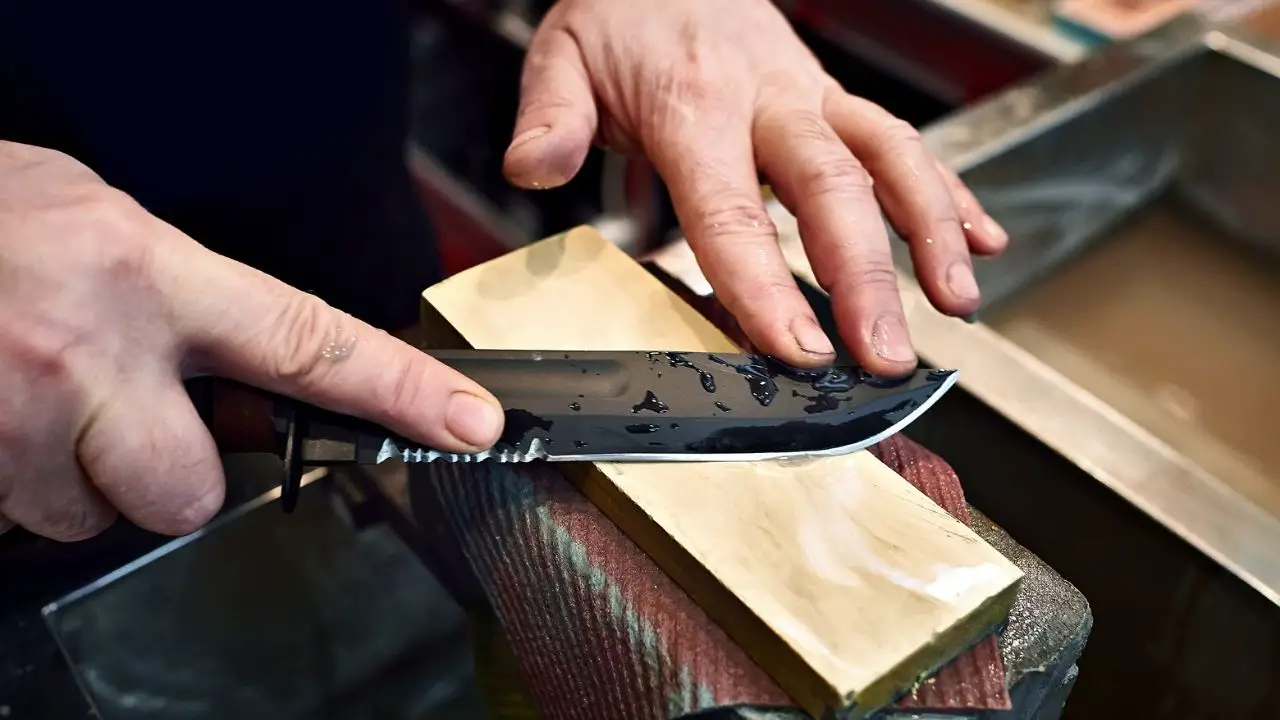
The main idea with scheduled preventative maintenance of your hunting knife is to give it a bit of a spa day every once in a while. It’ll keep your hunting knife in peak condition and will improve its life expectancy quite significantly just by spending a half-hour taking care of your tool.
It’s one of those things that is super important if you want your hunting knife to last, but it is very easy to forget about and not do. Trust me, the benefits of taking a proactive approach to maintain your hunting knife are well worth the effort.
Additional Maintenance Steps For Folding Hunting Knives
We’ve covered many of the basics surrounding cleaning and doing preventative maintenance to your hunting knife, but there are a few unique things you should be aware of if you have a folding hunting knife.
Having a folding hunting knife can be super great due to its increased portability and ease of use, but it does take a little more care and time to clean and maintain. Below are a few of the things you should do to make sure your hunting knife is as clean as possible and in its best working condition.
Cleaning Out the Folding Mechanism
The folding mechanism on a folding hunting knife can get super dirty and grungy while you’re using your tool. It is essential to ensure there is no trapped moisture or debris in the folding mechanism whenever you are finished using your knife.
It only takes a few minutes, so don’t wait for your scheduled hunting knife maintenance session to clean out your knife’s folding mechanism.
If there are bits of small debris stuck in your knife’s folding mechanism, running some water through the cavity and then thoroughly drying your knife usually gets the job done. Larger items or debris can be a little more challenging to clean out, but the tip of another knife or a piece of wire usually is quite effective at dislodging and removing it from the folding mechanism of your knife.
Make sure to check out my article on how to fix a pocket knife that won’t close . It’s got some super great information and can give you some more tips on how to clean out your folding hunting knife properly.
. It’s got some super great information and can give you some more tips on how to clean out your folding hunting knife properly.
Cleaning Out the Handle Cavity
The handle cavity (the space in the handle where the blade folds into the handle) on a folding hunting knife can also become super dirty and filled with all sorts of things. It’s important to take some time every time you’re done using your knife to ensure it is clear of any dirt or debris.
Running some water into the handle cavity of your knife is pretty effective at removing a lot of grime and dirt, but you may need to employ the use of a wire or other slim object to help dislodge debris.
It doesn’t take very long to clean out your knife’s handle cavity, but it could prevent some severe damage from occurring to your knife blade. Closing your folding hunting knife while there is a foreign object in the handle cavity can cause your blade to chip or bend depending on what the item is.
Take the time to clear out the handle cavity every time you use your knife, but do a more in-depth cleaning whenever you do your scheduled maintenance. You’d be surprised at all the dirt, grime, and filth that can hide in that space without you even noticing!
Applying Lubricant to the Pivot Pin
Applying some sort of lubricant to your folding hunting knife’s pivot pin and locking mechanism is essential in order to keep your knife closing and opening smoothly. Ensuring your folding knife opens smoothly is not only safer for you and others around you, but it makes using your knife more enjoyable and easier.
You don’t need to apply lubricant to your knife’s pivot pin every time you use your knife or clean it. There is no set schedule that you need to follow, but applying lubricant is a good idea whenever your knife feels stiff or whenever you do your preventive maintenance.
You can use many different products to lubricate your knife, but I’ve found the most success with Benchmade Bluelube or just some plain old food-grade mineral oil.
or just some plain old food-grade mineral oil.
Just apply a small amount of the lubricant of your choice to your knife’s pivot pin and use a cloth to wipe up any excess. Start with a tiny amount of lubricant and work your way up from there; you can always add more, but it is challenging to remove some you have already applied.
What to Do If You Can’t Properly Clean Your Hunting Knife After Using It
It is imperative to clean a hunting knife directly after using it due to the nature of the tasks they often do. A dirty knife that is left can be much more challenging to clean because things grime and substances usually bake onto the blade and are nearly impossible to remove.
Cleaning your knife right after you use it eliminates this problem because it takes care of the dirt and filth while still fresh. But sometimes, we are extremely busy and just don’t have the time to clean our knives right after using them.
There are a few things you can do to make your cleaning job more manageable later on if you’re unable to clean your hunting knife right away:
The best thing you can do if you can’t properly clean your hunting knife after using it is to get as much dirt and grime off of the blade as you possibly can. Every speck of material you remove while it’s fresh makes it a LOT easier when you sit down to clean your blade thoroughly.
Wiping your blade on your jeans, towel, or running your blade through a nearby creek are great options. Just make sure to dry your knife off well if you use any water to do a quick cleaning of your blade.
One thing that you should NEVER do is place a dirty hunting knife back in its sheath. Bacteria, rust, and many other nasty consequences can occur, so it’s best if you only ever put a clean and dry knife back in its sheath.
If your knife is dirty, transport it wrapped in a cloth or old shirt until you can properly clean it. Again, don’t put a knife back in its sheath if you haven’t adequately cleaned it!
Tips for Maintaining and Cleaning Your Hunting Knife
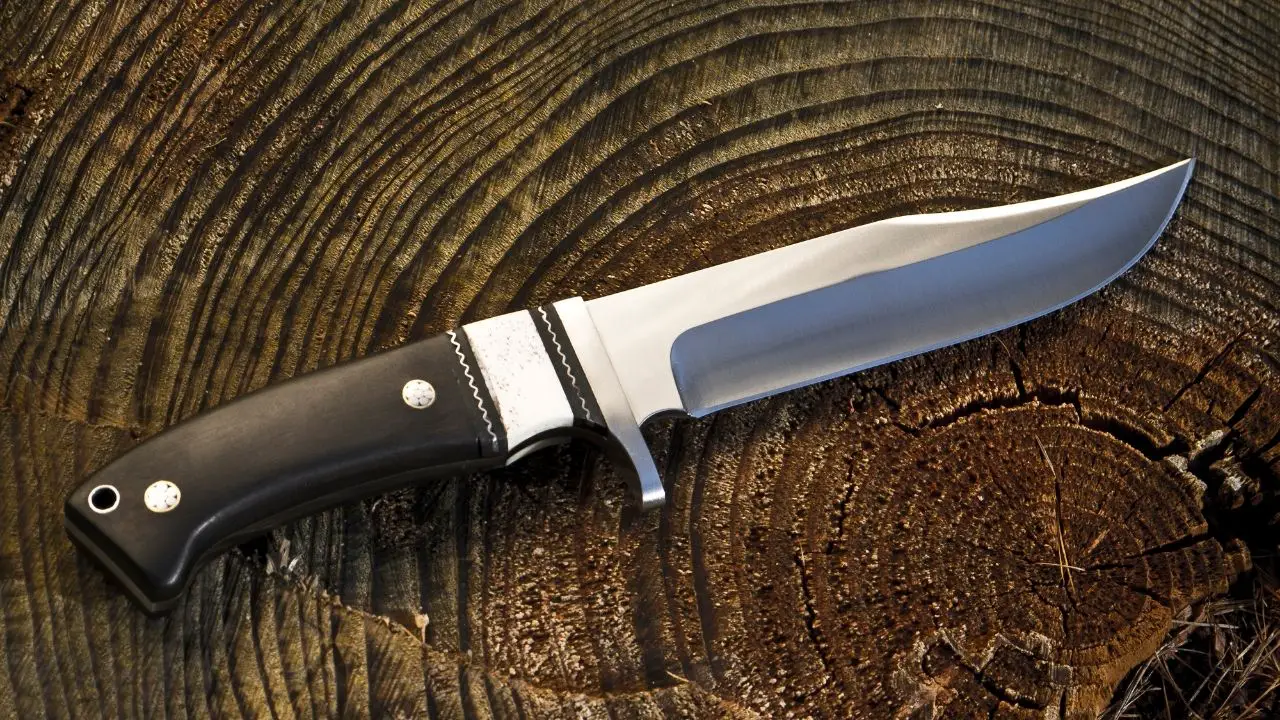
I’ve covered most of the things you’ll need to know in order to properly take care of your hunting knife and clean it well, but there are a few more tips that you should definitely know.
Learning to clean and take care of a hunting knife isn’t something that you learn overnight and are perfect at; it takes time and practice. You’ll likely ruin a few knives and make a few mistakes before you get it right, but that’s just part of learning.
Below are a few of the most common mistakes that I’ve identified when it comes to cleaning and taking care of a hunting knife, so hopefully, you can skip the school of hard knocks, at least on these select mistakes!
Tip 1: Clean Your Hunting Knife As Soon As Possible After Using It
I’ve already talked about what to do if you’re unable to clean your hunting knife right after using it, but it’s worth bringing up again due to its importance. I cannot stress enough how difficult it is to clean baked on and old grime from a knife blade.
If you’ve never had to do it before, try to keep it that way by washing your knife as soon after using it as possible.
Even if it’s as simple as carefully running your knife blade across your pants leg, anything to remove the grime and dirt after using your knife is better than nothing. If you’re unable to clean your knife right away, at least do something to lessen the difficulty of washing your knife later. The smallest things sometimes make the most significant differences.
Tip 2: Don’t Let Bodily Liquids Dry On Your Hunting Knife
At least in my experiences, one of the worst things that you can allow to happen to your hunting knife is for bodily fluids (such as blood, intestinal liquid, guts, or other bodily fluids from processing game animals) to dry on your blade.
It might not seem like a big deal, but you can actually end up harming your knife when trying to clean it off once it’s dried. You’ll need to apply so much pressure and force when cleaning dried bodily fluids from your knife that you can permanently scratch or hurt your blade.
Just take an extra second that it never happens, and you can thank me later.
Tip 3: Keep Your Hunting Knife Extremely Sharp
Keeping your hunting knife extremely sharp is a great idea that makes your life a whole lot easier and can actually make using your blade safer.
When a blade is super sharp, you’re able to control it much better than if it was dull. Cleaning game animals or doing other tasks with your hunting knife will also be significantly easier because a sharp blade will cut through material cleanly and effectively.
To make your hunting knife’s edge razor-sharp, you don’t need to dedicate an enormous amount of time to it either. Just spending an extra fifteen minutes to really hone your blade when you’re doing the scheduled maintenance of your knife can make all the difference.
If you don’t have a whetstone or sharpening steel readily available, don’t worry. While it’s not ideal, there are many ways you can use items found in a typical household to sharpen your knife .
.
Tip 4: Spot the Signs of Rust and Prevent Your Hunting Knife From Rusting
Another tip that could potentially save your hunting knife from being overrun with rust is to look out for the signs of rust formation and take action to prevent it.
Rust can eat away at your blade and contaminate things that you cut with your blade, so it’s essential to try to prevent it at all costs. Especially with hunting knives, which often come into contact with meat, it is vital to stop and prevent rust from forming on the blade. Look for any discoloration on your knife blade because it could be a sign that rust is beginning to form.
For more information on removing rust from a knife blade and preventing it in the future, make sure to read my article on the subject here .
.
Having a good quality hunting knife is essential, so below, I’ve linked to a few of the most popular hunting knives that I think you’ll enjoy and love using.
